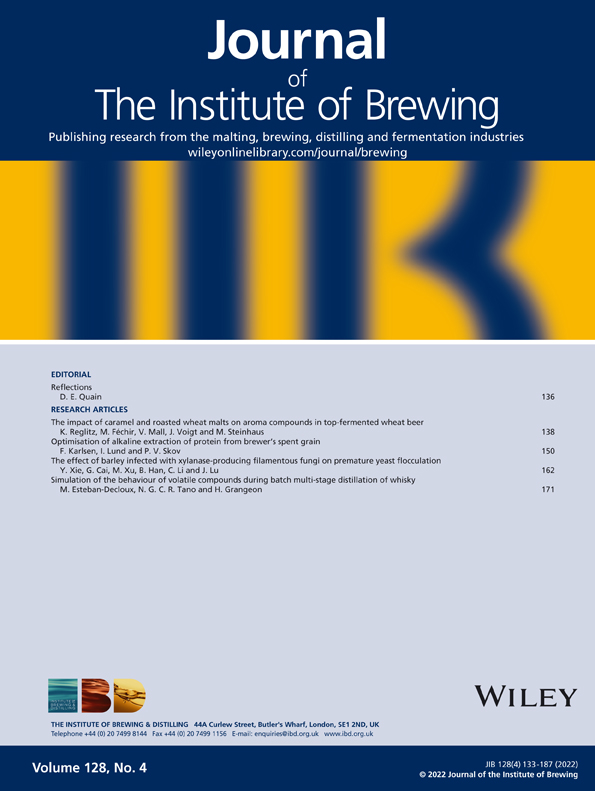FORMATION OF ESTERS FROM ACIDS BY BREWER'S YEAST II. FORMATION FROM LOWER FATTY ACIDS
Abstract
A study has been made of the formation of a number of ethyl esters from the corresponding lower fatty acids in anaerobic fermentation with Saccharomyces cerevisiae in synthetic medium. Ethyl esters of butyric acid up to pelargonic and isocaproic acids were formed, but no ethyl esters were formed from propionic acid, isobutyric acid, isovaleric acid and presumably not from formic acid. The correlation between ester formation and acid concentration could be expressed by a modification of the Briggs-Haldane equation of monomolecular enzymic reactions. The Michaelis constant decreased with increasing molecular weight; it was 8 mM for butyric acid and 0.4 mM for pelargonic acid. The maximum rate for the straight-chain saturated fatty acids decreased from 210 μM per fermentation for butyric acid to 40 μM per fermentation for pelargonic acid. Irrespective of their ability to act as substrates of ester formation, all acids were competitive inhibitors of ester formation of other acids. These results are compared to the results of analyses of beer and wine reported in the literature. Fatty acids are toxic to yeast; this toxicity is discussed. Most probably, the fatty-acyl-CoA compounds formed acted as inhibitors of essential reactions requiring acyl-CoA (e.g. lipid synthesis).




